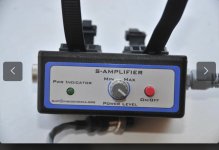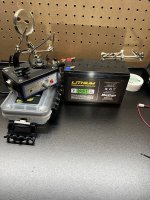Getoffmyland
New member
I was told that MDs are radio transmitters so are restricted to stop the frequencies getting out too far. This would definitely restrict depth.
I know a slow swing speed is an easy thing to do to improve depth.
On vintage detectors you can get onto the PCB and potentially modify them.
I remember the Fisher 1266 having PCBs with accessible components.
Any RF Engineers out there tried improving depth? Or can advise where to start?
Maybe its as easy as using a higher voltage to the circuit( I know this will drastically reduce the life of some components).
Perhaps it will be inductance to change or both resistance and inductance. When I get one it maybe it uses PWM and I can look there
I know a slow swing speed is an easy thing to do to improve depth.
On vintage detectors you can get onto the PCB and potentially modify them.
I remember the Fisher 1266 having PCBs with accessible components.
Any RF Engineers out there tried improving depth? Or can advise where to start?
Maybe its as easy as using a higher voltage to the circuit( I know this will drastically reduce the life of some components).
Perhaps it will be inductance to change or both resistance and inductance. When I get one it maybe it uses PWM and I can look there


